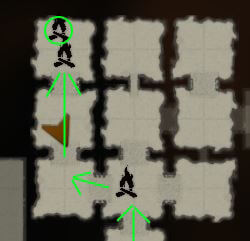Brain rot is the term used to describe the phenomenon of a person’s mental abilities declining or diminishing. A person suffering from brain rot can no longer think clearly, concentrate and make decisions.
Vulgarly speaking, brain rot means that someone becomes stupider and dumber.
In another second meaning, brain rot means that someone is (seemingly) obsessively thinking about something or someone and this limits cognitive abilities. This can lead to stress and anxiety.
A German translation for „brain rot“ is „Hirnfäule“. However, the editorial team believes that this translation is too drastic. This is because brain rot is not about the brain breaking down, but about mental abilities being or becoming impaired.
What is brain rot? Causes, reasons and characteristics
The idea behind the „brain rot“ phenomenon is that excessive undemanding consumption of certain media, irrelevant low-quality information, memes, short videos and social media can cause a person’s mental abilities to deteriorate.
Brain rot also means that, for example, staying in an echo chamber for too long, disappearing into a rabbit hole or being overly preoccupied with just one thing can lead to cognitive decline.
Brain rot has the following properties:
(Not all characteristics need to apply.)
- Shortened attention span
- You are easily distracted
- Everything outside of the smartphone is boring
- Unable to think clearly
- Difficulty concentrating
- Your mind is foggy
- You feel restless and agitated
- Doomscrolling + scrolling paralysis (constantly looking for the next dopamine kick)
- Being chronically online
- Inability to organize thoughts and information, solve problems and make decisions
- Reduced impulse control
- Online world is considered more real than the real world
Brain rot becomes particularly noticeable when the information acquired on the internet does not match reality and you cling to the information from the internet. This means that people deny that reality is real.
Brain rot can be counteracted:
- Get out into the fresh air
- touch grass
- Talk to people
- Digital detox
Regulating your time on your smartphone or computer can also be a good idea. For example, you can specify that you can and may only use the devices at certain times for a set period of time. If you don’t adhere to this, you can install a parental control that automatically switches off the smartphone when a defined number of minutes have elapsed.
A parental control that bans certain websites and topics can also be a good idea.
The best way to combat brain rot is to communicate with others, not just like-minded people. Perhaps there is something else behind the chronic online behavior. Maybe someone is lonely or sad?
Is Brain rot real?
„Brain rot“ is not an ICD diagnosis, i.e. not an official medical diagnosis. But the influence of digital media is undeniable.
Editor’s opinion: Social media is built against us. This means that the aim of social media is for us to spend as much time there as possible. That’s why there is infinite scrolling and a constant flow of new information. You have to use your willpower to take a break from this.
Anyone who has ever spent several hours watching short videos on their smartphone and then felt exhausted and drained knows what brain rot feels like.
You can become radicalized on social media and start believing conspiracy myths. It may start harmlessly with an interesting video, but the more you read up and dig in, the deeper you go down the rabbit hole (metaphor) and the further away from reality you become. If this is compounded by strong convictions that what you have read or seen is true, then you are in conflict with reality. Because no matter how irrelevant and nonsensical what you have read or seen is, someone with strong convictions will now defend their world view.
The best examples of this are people who believe that the earth is flat or that vaccinations cause autism. These people have read this somewhere on the internet – the quality and integrity of the source doesn’t matter. They want to believe this nonsense.
















